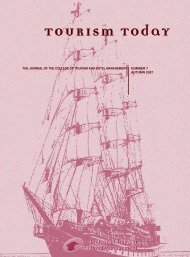The Invisible Black Victim: How American Federalism Perpetuates ...
The Invisible Black Victim: How American Federalism Perpetuates ...
The Invisible Black Victim: How American Federalism Perpetuates ...
Create successful ePaper yourself
Turn your PDF publications into a flip-book with our unique Google optimized e-Paper software.
groups is a difficult enterprise under the best of circumstances, but having the resources and<br />
knowledge to sustain a presence on multiple legislative venues simultaneously requires<br />
extraordinarily well-organized and highly resourced participants. <strong>The</strong>se groups are unlikely<br />
to regularly include the interests of poor, urban minorities. While multiple legislative venues<br />
may provide a more open political system in some respects, it also creates a political context<br />
that perpetuates racial hierarchy by creating opportunities for highly resourced groups to<br />
control the terms of the debate and forcing the less organized onto their terrain, no matter<br />
how they may initially frame the problem. This is dramatically illustrated by how local<br />
pressures for improvements to neighborhood public safety and quality of life are truncated<br />
and transformed in national discourse into dichotomous debates over more or less drug<br />
enforcement, gun control, or policing. None of those debates strike at the heart of the urban<br />
conditions that drive so many people into local politics to advocate on behalf of their<br />
communities.<br />
Finally, federalism exacerbates the classic obstacles to collective action by balkanizing urban<br />
areas from one another and forcing groups to fight battles locally without the resources,<br />
support, and political power of similarly situated groups around their own state, much less<br />
around the country. Urban areas around the country have sought to reduce gun violence and<br />
the allure of the drug trade in remarkably similar ways, but each locale is largely on its own<br />
to lobby state and national lawmakers for support. <strong>The</strong> issue is less a question of how much<br />
centralization in policymaking is necessary and more a question of how to keep policy<br />
makers with substantial resources accountable to the publics that are most affected by serious<br />
crime. Occasionally, a series of events will force these issues onto the national agenda, as<br />
when the urban riots and violence of the late 1960s and early 1970s provided greater<br />
opportunity for groups representing the urban poor to find a voice in the political process. But<br />
once these events subside, congressional attention reverts to repeat players with the capacity<br />
to remain active, long after specific issues and events have faded from view. <strong>The</strong> implication<br />
for thinking about federalism is that the representation and voice of poor citizens and many<br />
racial minorities are largely muted except when exogenous factors temporarily open up new<br />
opportunities. <strong>The</strong>orizing the relationship between federalism and inequality, then, requires<br />
more systematic attention to the incentives, opportunities, and possibilities for vindicating the<br />
interests of racial minorities in national politics as time- and context-sensitive questions.<br />
In a profound sense, the United States may lack enduring institutional mechanisms to<br />
significantly reduce inequality in criminal punishment or even racial inequality more broadly<br />
(see McCann & Johnson 2009 for a related discussion over the abolition of the death<br />
penalty). Emphasis by national civil rights organizations and civil libertarians on police bias,<br />
hate crimes, and prison conditions may actually serve to further obscure the mobilization<br />
efforts by groups connecting crime to broader quality-of-life conditions, thus perpetuating the<br />
disconnect between criminal punishment and the long history of racial exclusion that defines<br />
so much of <strong>American</strong> history. Seen in this way, the rise of mass incarceration generally, and<br />
particularly the massive disparities between whites, Latinos, and <strong>Black</strong>s, can be seen as a<br />
function of a federal system that was designed to limit policymaking from the center and to<br />
allow racial hierarchies to be maintained. It is perhaps not coincidental that the United States<br />
is widely regarded as a welfare state laggard with the highest income inequality in the<br />
industrialized world and also the country that incarcerates a higher percentage of its poor and<br />
marginalized citizens than virtually any other (Alesina & Glaeser 2004).<br />
Future research might consider the contexts in which the broad social needs of low-income<br />
minorities are attended to at various levels of government. One mechanism may be trans-














